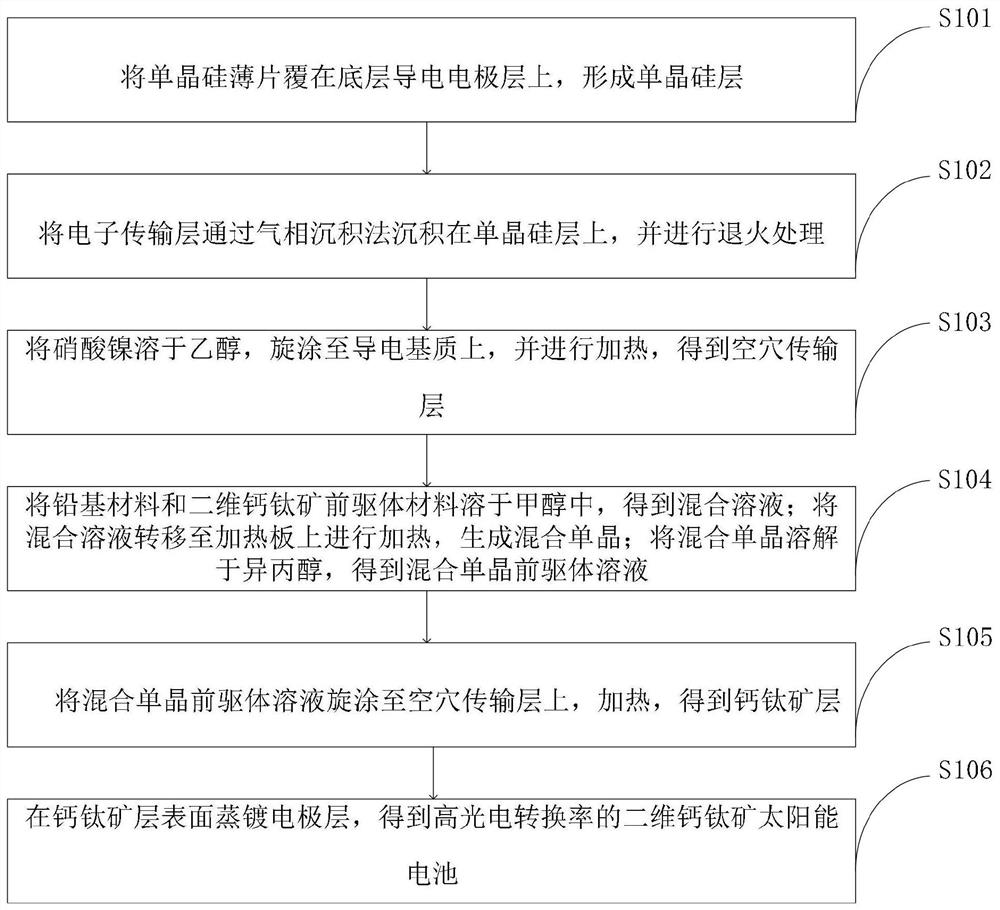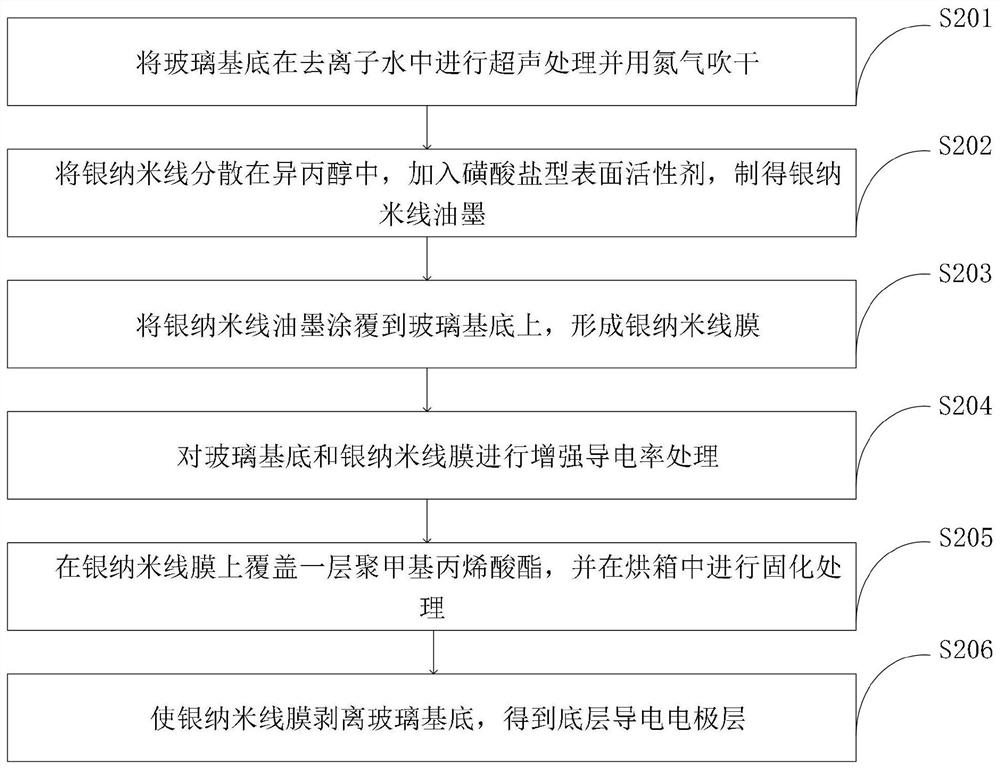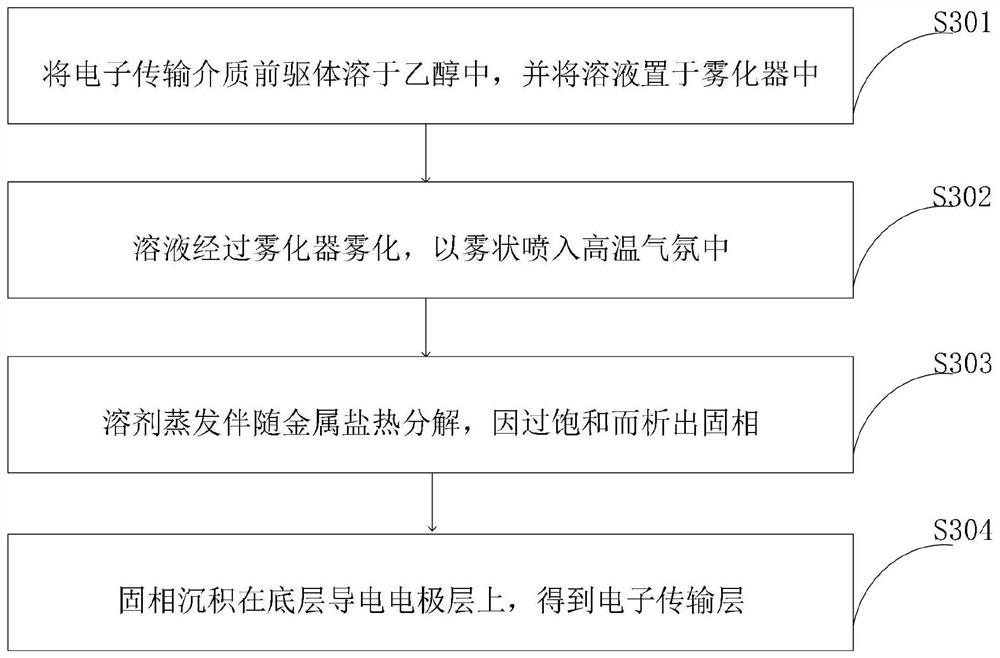Two-dimensional perovskite solar cell with high photoelectric conversion rate and preparation method
A photoelectric conversion rate, solar cell technology, applied in photovoltaic power generation, circuits, electrical components, etc., can solve the problems that the photoelectric conversion efficiency of solar cells cannot meet the actual use requirements, cannot meet the actual use requirements, and the photoelectric conversion efficiency is low, reaching Effects of avoiding tissue defects, preventing workpiece deformation, and improving photoelectric conversion rate
- Summary
- Abstract
- Description
- Claims
- Application Information
AI Technical Summary
Problems solved by technology
Method used
Image
Examples
preparation example Construction
[0055] Such as figure 1 As shown, the preparation method of the two-dimensional perovskite solar cell with high photoelectric conversion rate provided by the embodiment of the present invention includes the following steps:
[0056] S101, covering the single crystal silicon sheet on the bottom conductive electrode layer to form a single crystal silicon layer;
[0057] S102, depositing the electron transport layer on the single crystal silicon layer by vapor deposition, and performing annealing treatment;
[0058] S103, dissolving nickel nitrate in ethanol, spin-coating on the conductive substrate, and heating to obtain a hole transport layer;
[0059] S104, dissolving the lead-based material and the two-dimensional perovskite precursor material in methanol to obtain a mixed solution; transferring the mixed solution to a heating plate for heating to generate a mixed single crystal; dissolving the mixed single crystal in isopropanol, Obtain a mixed single crystal precursor sol...
Embodiment 1
[0098] The glass substrate was ultrasonically treated in deionized water and dried with nitrogen; the silver nanowires were dispersed in isopropanol, and a sulfonate surfactant was added to prepare the silver nanowire ink; the silver nanowire ink was coated on On the glass substrate, a silver nanowire film is formed; the glass substrate and the silver nanowire film are treated to enhance conductivity; the silver nanowire film is covered with a layer of polymethacrylate, and cured in an oven; the silver nanowire The wire film is peeled off the glass substrate to obtain the bottom conductive electrode layer.
[0099] A single crystal silicon sheet is covered on the bottom conductive electrode layer to form a single crystal silicon layer.
[0100] Dissolve the precursor of the electron transport medium in ethanol, and place the solution in the atomizer; the solution is atomized through the atomizer, and sprayed into the high-temperature atmosphere in the form of a mist; the solve...
PUM
 Login to View More
Login to View More Abstract
Description
Claims
Application Information
 Login to View More
Login to View More - R&D
- Intellectual Property
- Life Sciences
- Materials
- Tech Scout
- Unparalleled Data Quality
- Higher Quality Content
- 60% Fewer Hallucinations
Browse by: Latest US Patents, China's latest patents, Technical Efficacy Thesaurus, Application Domain, Technology Topic, Popular Technical Reports.
© 2025 PatSnap. All rights reserved.Legal|Privacy policy|Modern Slavery Act Transparency Statement|Sitemap|About US| Contact US: help@patsnap.com



